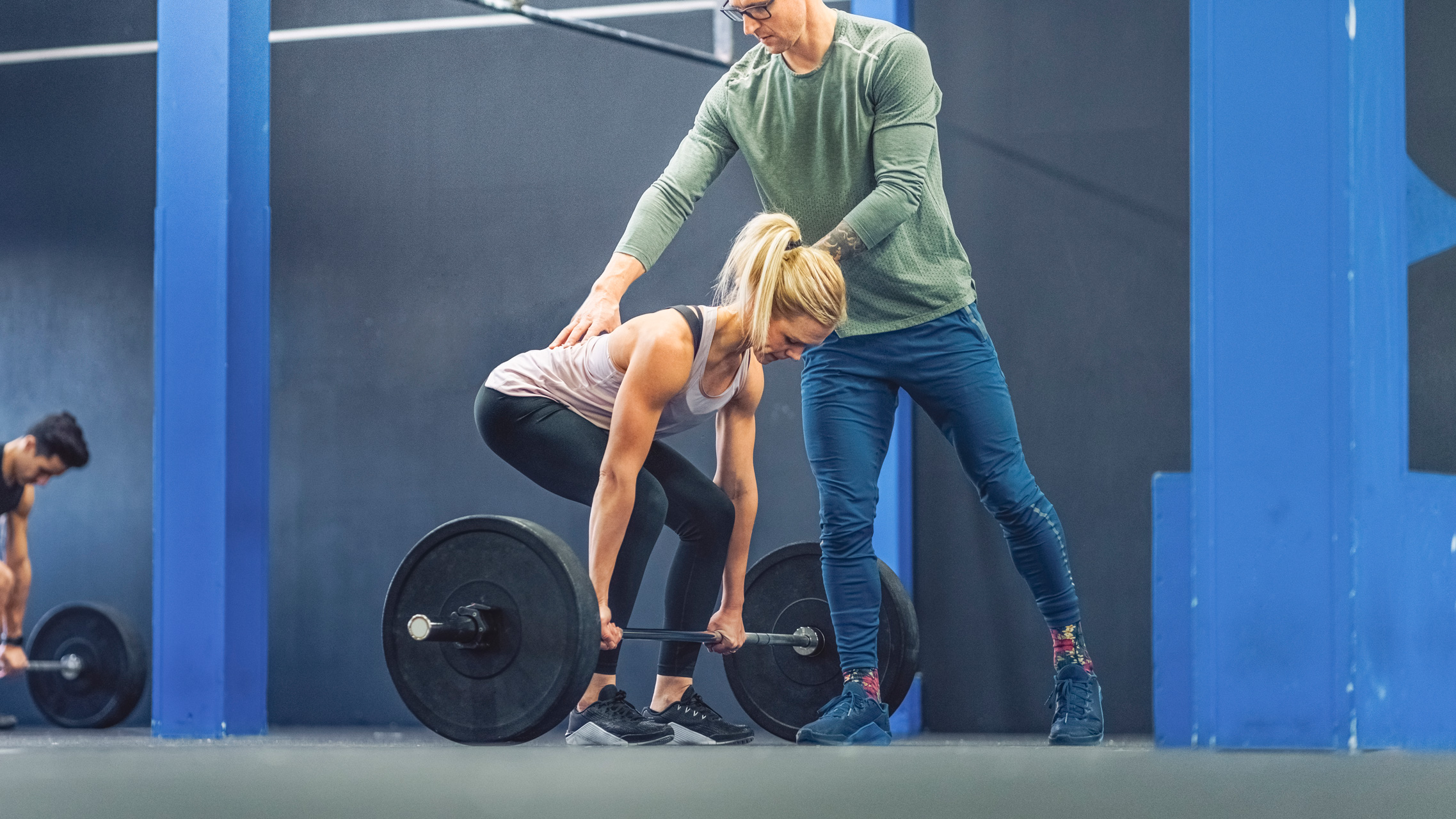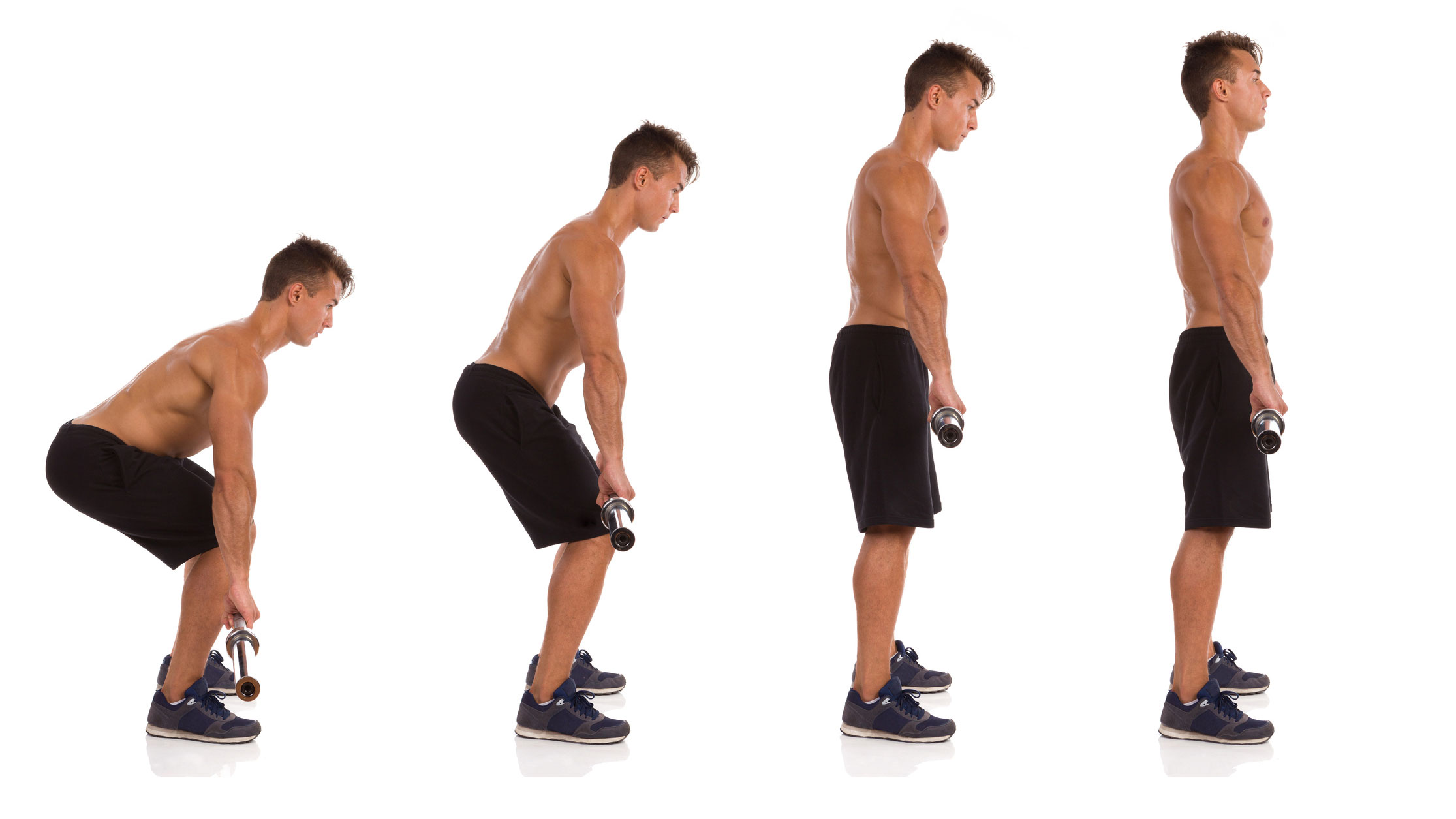How to deadlift properly with barbells to build muscle and improve your form
Mastering how to deadlift properly with barbells improves your form, builds strength, and gets the most from your training


Learning how to deadlift properly with barbells is one of the best things you can do for your workouts — and for more reasons than one. A deadlift is a compound move that works multiple muscles simultaneously.
From your hamstrings to your glutes and your erector spinae to your shoulders, perfecting this move can also better your grip, build strength and improve bone density. The list goes on.
But before loading a barbell onto your back, consider building up the strength in your lower body by using a set of the best adjustable dumbbells to really nail this move.
Never done a deadlift before? We've compiled a handy guide on how to deadlift with dumbbells, so this should give you a good starting point. Once you've perfected your form, you can switch to a barbell.
But it's a different experience lifting with a single weight instead of two independent dumbbells. So, whether you're switching or taking on the barbell for the first time, we'll cover everything you need to know on how to deadlift properly with barbells.
How to deadlift properly with a barbell

- Start with your feet shoulder-width apart and a barbell on the floor in front of you. The bar ideally will have plates on either end to raise it from the ground and the bar should sit over your feet. Bend at the knees and push your bum back to lower your hands down to grasp the bar.
- When you’re at the bar, place your hands so they are just wider than your legs with an overhand grip.
- Squeezing the bar tightly, push through your feet and legs to stand. When the bar is at your knees, straighten legs and come up to standing. Throughout, maintain a flat back and keep your neck in line with your back.
- Then slowly lower the barbell by bending at the hips and knees to lower the bar back down.
- As you lower the bar, it should almost glide down your thighs until you reach your knees, at which point your knees bend, allowing you to place the bar down.
- Then go straight into the second repetition.
- Remember, that back needs to stay flat, core needs to stay engaged and neck stays in line with back.
- Aim for 8-10 repetitions to start.
What are the benefits of deadlifts?
As we stand, sit, and walk in everyday life, we’re using our legs, bums, core, and back. Deadlifting properly is one of the best way to ensure those muscle groups stay stronger for longer. As well as reducing the risk of osteoporosis, deadlifts can prevent back problems as you age.
According to a study in the Journal of Strength and Conditioning Research, deadlifting reduced pain and increased activity in patients suffering from lower-back pain.
Start your week with achievable workout ideas, health tips and wellbeing advice in your inbox.
With many of us sitting in an office every day, deadlifts can improve our posture and undo the damage of a sedentary lifestyle. It does this by focusing on our glutes and legs, which are often neglected as we're sitting down all day, and our backs, which can become damaged if we're leaning over a laptop for long periods.
Deadlifts can improve our bone density, as this study of college-age men found that regular resistance training using bench presses, squats and deadlifts (otherwise known as the Big Three), can contribute to bone mineral density in both men and women.

Lifting big can lower cortisol, the stress hormone that encourages our body to store fat around our gut. That's why a good weights session feels so satisfying! It can also raise levels of testosterone in both sexes.
This contributes to the development of muscle and bone health in addition to improving everything from our metabolism to our sex drive. One study found regular, progressive resistance training improves the hormone production in both young and old adults.
This is especially relevant as we get older, as your hormones drop off in later life. Deadlifting is not just a young person's game — providing, as always, you take it easy, listen to expert advice, use correct form, and build your muscle slowly, you can deadlift at any age!
For athletes, it’s also a really time-efficient way to hit all these muscle groups effectively. If you’re getting into running, deadlifting will make your lower body stronger. If you’re looking to build strength, deadlifts teach you to lift heavy objects off the ground safely.
You can deadlift with dumbbells, kettlebells, and even resistance bands at home (and you can check out our guides to the best adjustable dumbbells and best kettlebells, if you're keen to try in the comfort of your own home).
However, using a barbell allows you to lift more weight, helping you to develop strength and power. Whatever your fitness journey looks like, learning to deadlift properly with barbells can help you along the way.
How to perfect your form
Although the move looks deceptively straightforward, learning how to do deadlift properly means focusing on your form. Getting the technique right improves the efficiency of your workout and helps avoid injury when exercising with weights.
To give you a few helpful tips, we spoke to personal trainer Hendrick Famatumi, who says that the most crucial step is to make sure you're properly warmed up before picking up the bar.
Hendrick Famatumi is a personal trainer and two-time British Powerlifting Champion. He is also an IPF World Deadlift Gold Medalist and former American football player.
He advocates warming up with hamstring and back stretches, and practising the movement with empty hands or just using the bar before attempting to add any weight.
Even a barbell can weigh up to 20kg, making it perfect for warming up by mimicking the movement patterns with a smaller weight. Once you're ready to lift the weighted bar, Famatumi has a few other tips to get you started.
- Keep a neutral spine. "Imagine a tennis ball is between your chin and chest," he suggests. And if your back is bending, lower the load.
- Keep your heels on the ground. You'll need to push through your feet and legs to rise from the deadlift, but if you're struggling, drop the load.
- Wear the right shoes for weightlifting. Running shoes have elevated heels to propel you forwards, so use a pair of cross training shoes to keep you close to the ground.
- Make sure the bar stays close to your body. "The further away the bar is, the more your lower back works instead of your hamstrings, glutes and core,' says Hendrick.
Where should you feel it when you deadlift?
Often referred to as the 'king of exercises,' the deadlift is a compound movement that works the posterior chain. "Deadlifting is an effective multi-joint exercise that can help build strength and stability," American Council on Exercise-certified personal trainer Jacque Crockford says.
"The prime mover in the deadlift exercise are the gluteal muscles, primarily our gluteus maximus. However, due to the amount of muscles recruited, other areas of the body, including the trunk and back muscles, will also engage to support the movement of the lower body."
Despite mainly focusing on your upper body and core, there's some leg involvement too. "Depending on someone's hamstring flexibility, as well, may impact sensations and range of motion of an effective deadlift," adds Crockford.
Jacque Crockford is an American Council on Exercise (ACE) Certified Personal Trainer with over 20 years of experience. She was on Kansas State University's women's rowing team, but nowadays, Jacques takes her love for fitness to new heights, competing in Ironman triathlons.
Lucy is a freelance journalist specializing in health, fitness and lifestyle. She was previously the Health and Fitness Editor across various women's magazines, including Woman&Home, Woman and Woman’s Own as well as Editor of Feel Good You. She has also previously written for titles including Now, Look, Cosmopolitan, GQ, Red and The Sun.
She lives and breathes all things fitness; working out every morning with a mix of running, weights, boxing and long walks. Lucy is a Level 3 personal trainer and teaches classes at various London studios. Plus, she's pre- and post-natal trained and helps new mums get back into fitness after the birth of their baby. Lucy claims that good sleep, plenty of food and a healthy gut (seriously, it's an obsession) are the key to maintaining energy and exercising efficiently. Saying this, she's partial to many classes of champagne and tequila on the rocks whilst out with her friends.
